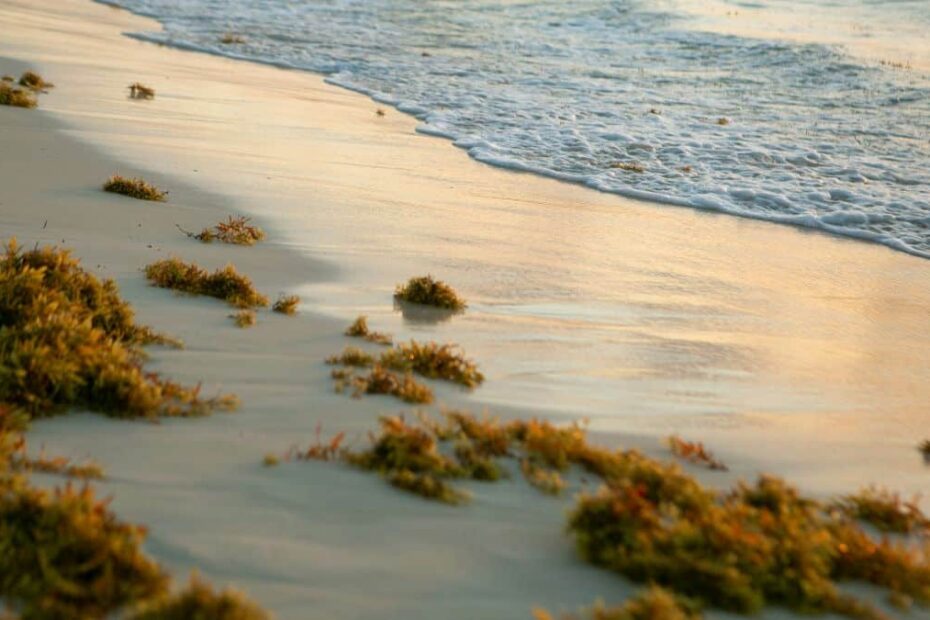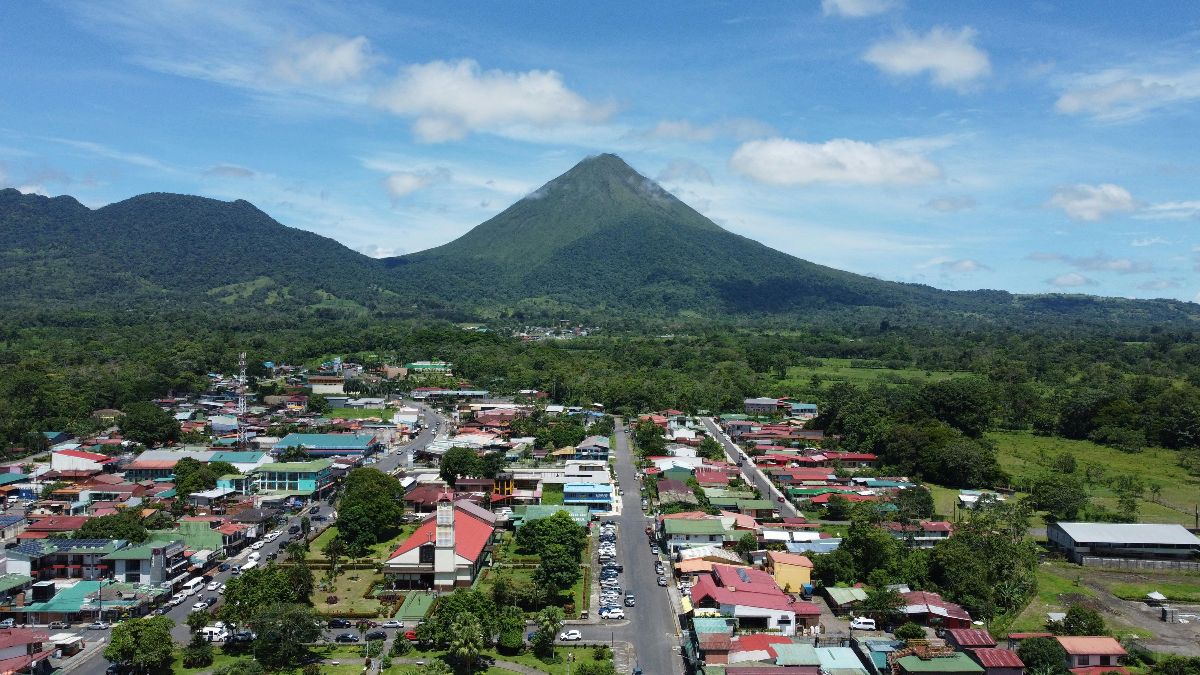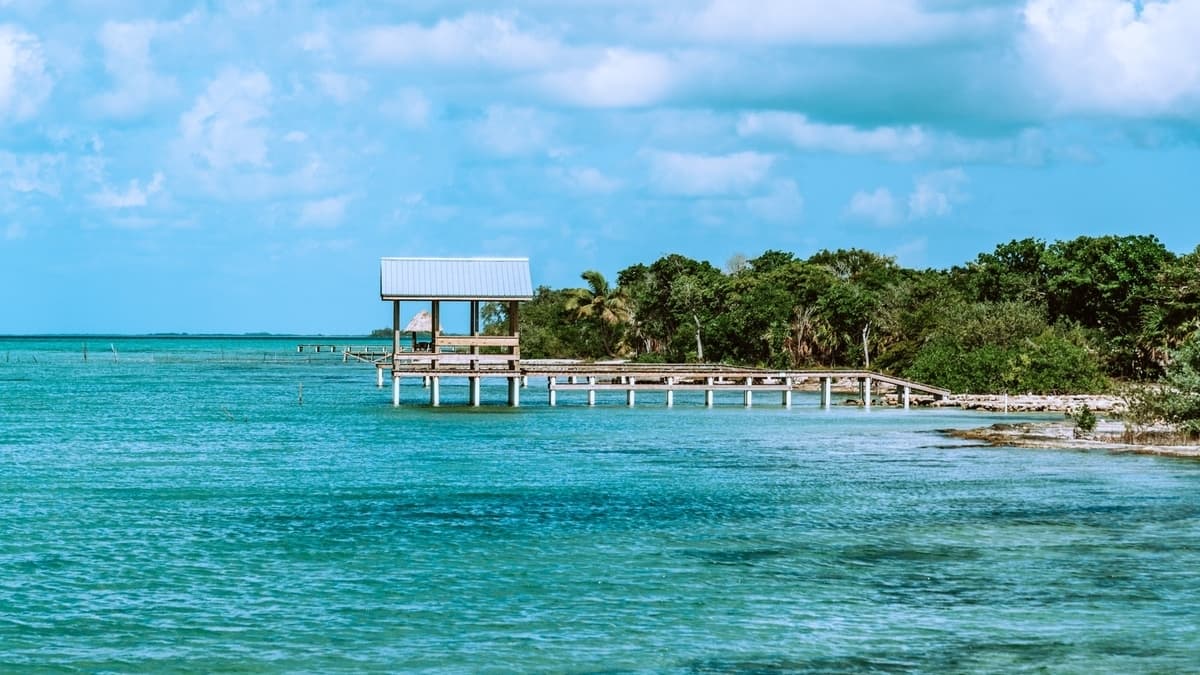Sargassum, the brown seaweed now washing ashore in record amounts across the Caribbean, has become a major concern for travelers to Belize. This guide to sargassum in Belize explains what it is, when and where it appears, how it impacts tourism, and what visitors can expect.
Travelers researching Belize right now will quickly come across one issue dominating coastal life right now: sargassum. This floating brown seaweed has become a persistent problem across the Caribbean, and Belize is no exception. Visitors planning a trip for snorkeling, diving, or simply relaxing on the beach often ask whether sargassum will affect their stay. The answer depends on where you are going, when you are visiting, and what kind of vacation you are expecting.
What is Sargassum?
Sargassum is a type of brown algae that floats on the surface of the ocean, kept buoyant by small gas-filled pods. In open water it plays an important role in the ecosystem, providing shelter for marine life and food for fish and turtles. Historically, sargassum was concentrated in the Sargasso Sea in the North Atlantic. Over the past decade, however, vast blooms have spread across the Atlantic and Caribbean, forming what scientists call the Great Atlantic Sargassum Belt.
These floating mats are carried by currents and winds toward the Caribbean and Gulf of Mexico, where they wash up on beaches in massive quantities. While beneficial offshore, once sargassum hits the shore it decomposes, releasing a strong odor similar to rotten eggs and smothering coastal waters. In small amounts this is manageable, but in recent years the scale has become overwhelming.
The Current Situation in Belize
In 2025 Belize is facing its worst year on record for sargassum. Satellite tracking shows record-breaking amounts drifting into the Caribbean, with estimates of over 37 million tons across the region by mid-year. For Belize this has meant near-daily arrivals of seaweed along the eastern coast, stretching from Ambergris Caye down to Placencia and Hopkins.
Local reports describe mountains of sargassum accumulating on popular beaches, with San Pedro town alone removing over 100 tons in a single week. Even with daily cleanups, the seaweed often returns within hours. Coastal businesses are under pressure, both from the costs of removing it and from unhappy visitors who did not expect the smell or unsightly beaches. Fishermen report that lobsters and reef fish are moving away from traditional areas, and tour guides are forced to travel further to find clear water for excursions.
When is Sargassum Season in Belize?
Sargassum used to be a seasonal problem, usually arriving in spring and summer and disappearing later in the year. Travelers often assumed that visiting in April or May meant clear water. That is no longer the case. In 2025, sargassum is being reported throughout the year, with the heaviest concentrations still between March and October. Warmer seas and nutrient-rich runoff from South America are feeding larger blooms, making this a more permanent issue rather than a seasonal nuisance.
Where is Most Affected?
The areas hardest hit are Belize’s east-facing coasts. Ambergris Caye, particularly San Pedro and the northern and eastern beaches, has seen daily cleanups with limited success. Caye Caulker is also struggling, with crews constantly removing seaweed from its narrow beaches. On the mainland coast, Placencia and Hopkins have faced thick buildups that deter swimming and leave a strong odor along the waterfront.
These are Belize’s most popular tourist areas, so the impact is significant. Many beachside hotels employ teams of workers each morning to clear sargassum, but the problem often returns before the day is out. Travelers expecting pristine beaches should be prepared for disappointment in these locations during peak sargassum months.
Which Areas are Less Affected?
Not every part of Belize suffers equally. Geography and currents play a major role. The western side of Ambergris Caye, especially around Secret Beach, is naturally protected from the seaweed. The waters here remain clear and free from the smell that affects the east coast. Similarly, Corozal in northern Belize sees little to no sargassum because it sits on a bay rather than the open sea. Inland destinations like, say, San Ignacio are obviously completely unaffected, making them attractive alternatives for visitors who want to combine culture and nature with some time on the coast.
Impact on Tourism and Activities
The biggest complaint from visitors is the smell and appearance of the beaches. Thick mats of decomposing sargassum can make swimming from shore unpleasant, and the odor is hard to ignore. For those who came to Belize expecting long days on white sand beaches, this can be disappointing.
Snorkeling and diving, however, are less affected. The Belize Barrier Reef lies offshore, and tours usually head beyond the sargassum to sites where conditions are much clearer. Whale shark season in Placencia, which peaks around the full moons of April, May, and June, still draws divers despite the seaweed onshore. Travelers may find the beaches less appealing, but the underwater attractions remain accessible.
What is Being Done in Belize?
Belize is not ignoring the problem. Beach towns, hotels, and community groups carry out daily cleanups, often with volunteers joining in. The government has declared the situation a national emergency and released funds to help businesses with the cost of labor and equipment. In 2025 a special grant program provided financial support to coastal hotels and tour operators struggling with removal costs.
New technology is also being introduced. Modified vessels designed to harvest sargassum before it reaches shore have been deployed off Ambergris Caye, and floating barriers are being tested to divert the seaweed away from beaches. These measures are still in early stages, but they represent an effort to move beyond simple raking and shoveling.
At the same time, there is growing interest in finding uses for the collected sargassum, such as fertilizer, animal feed, or even building materials. For now, though, most of it is simply collected and transported to designated disposal sites.
Belize in Regional Context
Belize is far from alone. Across the Caribbean, sargassum has become an annual challenge. Mexico has at times brought in its navy to help with cleanup, and resorts there also struggle with daily arrivals. Honduras’s diving islands report similar issues during peak season. The problem is regional, fueled by global climate change and ocean currents, and unlikely to disappear soon.
For Belize, the challenge is particularly sensitive because tourism is such a large part of the economy. The government, hotel associations, and conservation groups continue to coordinate responses, but the seaweed is likely to remain part of the travel landscape for a good while yet.
Tips for Travelers
For travelers planning a Belize trip, the most important step is to set realistic expectations. Beaches on the east coast may not look like the postcards, especially between March and October. If a beach vacation is your priority, look at staying on the west side of Ambergris Caye or consider inland and offshore alternatives. If snorkeling, diving, and wildlife are your main goals, you can still enjoy Belize despite the seaweed.
It is also wise to ask hotels for recent photos or updates before booking. Many properties are transparent about the conditions and their cleanup efforts. Sargassum forecast maps are also available online, though they provide only general guidance. As already mentioned, inland destinations including many of the Mayan archeological sites are completely unaffected and provide an excellent balance to time on the coast.
Wrapping Up
Sargassum is now a fact of life in Belize, and 2025 has been the most severe year yet. Popular destinations like Ambergris Caye, Caye Caulker, Placencia, and Hopkins are seeing record arrivals of seaweed, with daily cleanups unable to keep up. At the same time, less-affected areas like Secret Beach and Corozal show that not all of Belize is impacted to the same extent.
For visitors, the key is to understand what sargassum means for their trip. It may limit time on some beaches, but it doesn’t stop reef snorkeling, diving with whale sharks, or exploring the country’s inland wonders. Belize remains one of Central America’s most rewarding destinations, but travelers should arrive informed about the seaweed situation and plan accordingly.
Bite-Sized FAQ: Sargassum in Belize
When is sargassum season in Belize? The heaviest influx usually runs from March through October, but in 2025 sargassum has been reported year-round.
Which parts of Belize are most affected? East-facing coasts, especially Ambergris Caye, Caye Caulker, Placencia, and Hopkins, are hit hardest.
Are there areas without sargassum? Yes. The west side of Ambergris Caye (around Secret Beach) and Corozal in the north are mostly sargassum-free.
Does sargassum affect snorkeling and diving? Not significantly. While beaches may be unpleasant, tours go offshore to the reef where conditions are much clearer.
What about whale shark season in Placencia? Whale sharks can still be seen around the spring full moons. Sargassum may be onshore, but diving takes place offshore where conditions are better.
Is the problem unique to Belize? No. Sargassum is a regional issue affecting Mexico, Honduras, and much of the Caribbean.
Why is there more sargassum now? Scientists link the increase to warming seas, nutrient runoff, and changing currents, all of which fuel larger blooms.
What is being done about it? Belize is investing in harvesters, barriers, and cleanup crews, with government grants helping hotels and towns manage daily removal.
Can sargassum make you sick? Decomposing sargassum releases a sulfur-like odor. Some people experience irritation, but most visitors are not seriously affected.
Should I cancel my Belize trip because of sargassum? Not necessarily. The seaweed can impact beaches, but snorkeling, diving, inland travel, and western Belize remain excellent options.




